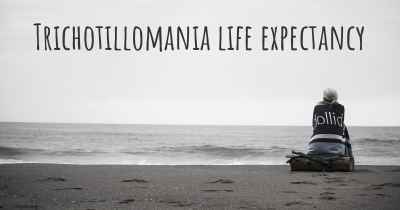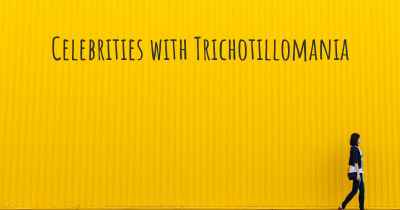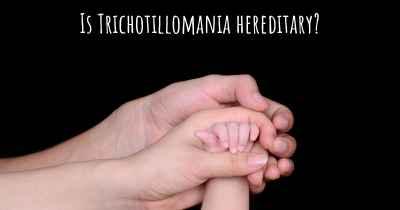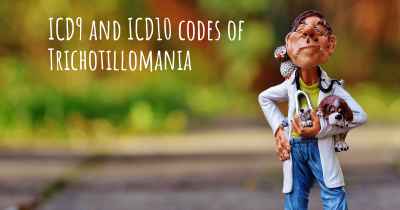What is the history of Trichotillomania?
When was Trichotillomania discovered? What is the story of this discovery? Was it coincidence or not?

Trichotillomania, also known as hair-pulling disorder, is a complex psychological condition characterized by the irresistible urge to pull out one's hair. This disorder has a long and intriguing history, with documented cases dating back centuries.
Ancient Times:
The earliest known reference to hair-pulling behavior can be traced back to ancient Greek and Roman civilizations. Greek physician Hippocrates, often regarded as the father of medicine, described a condition called "trichotemnomania" in the 4th century BCE. He observed that some individuals had an uncontrollable urge to pluck out their hair, leading to bald patches.
19th Century:
During the 19th century, trichotillomania gained recognition as a distinct disorder. French dermatologist François Henri Hallopeau coined the term "trichotillomania" in 1889, combining the Greek words for hair (trich-) and pulling (tillein). Hallopeau's work helped establish hair-pulling as a psychiatric condition rather than a purely dermatological issue.
Early 20th Century:
In the early 20th century, Sigmund Freud, the renowned Austrian neurologist and founder of psychoanalysis, contributed to the understanding of trichotillomania. Freud believed that hair-pulling was a manifestation of unconscious conflicts and desires. He suggested that the act of pulling out hair provided a sense of relief or gratification, serving as a coping mechanism for unresolved psychological issues.
Modern Era:
Trichotillomania continued to be studied and classified within the field of psychiatry throughout the 20th century. In 1987, the Diagnostic and Statistical Manual of Mental Disorders (DSM-III-R) officially recognized trichotillomania as an impulse control disorder. It was later reclassified as an obsessive-compulsive and related disorder in the DSM-5, reflecting its similarities to other compulsive behaviors.
Research and Understanding:
Over the years, researchers have made significant strides in understanding trichotillomania. Studies have explored various factors contributing to the disorder, including genetic predisposition, neurochemical imbalances, and environmental influences. The development of neuroimaging techniques has allowed scientists to examine the brain activity of individuals with trichotillomania, providing insights into the underlying neural mechanisms.
Treatment Approaches:
While there is no definitive cure for trichotillomania, several treatment approaches have proven effective in managing the symptoms. Cognitive-behavioral therapy (CBT) has emerged as a widely used therapeutic intervention. CBT helps individuals identify and modify the thoughts and behaviors associated with hair-pulling, promoting healthier coping strategies.
Support and Awareness:
Trichotillomania has gained increased recognition in recent years, thanks to the efforts of advocacy groups and mental health organizations. These organizations aim to raise awareness, reduce stigma, and provide support for individuals affected by the disorder. Online communities and support groups have also emerged, offering a platform for individuals to share their experiences and seek guidance.
Conclusion:
Trichotillomania has a rich history that spans centuries, from ancient Greece to modern-day research and understanding. While the disorder remains complex and challenging, advancements in treatment approaches and increased awareness offer hope for individuals living with trichotillomania.
Posted Aug 10, 2017 by Lucyeleanor2601 2620
Hair pulling was first mentioned by Aristotle in the fourth century B.C., was first described in modern literature in 1885, and the term trichotillomania was coined by the French dermatologist François Henri Hallopeau in 1889.
In 1987, trichotillomania was recognized in the Diagnostic and Statistical Manual of the American Psychiatric Association, third edition-revised (DSM-III-R).
Posted Aug 10, 2017 by Shirley 2150
Posted Aug 10, 2017 by Ellen 2161
Trichotillomania is The act of hair pulling has been observed for centuries and was accepted as meaningful and even encouraged at certain points in history in societies spanning the ancient Egyptians, early Greeks, and the Jains in India1; however, the term trichotillomania is now specifically reserved for the aberrant act of hair pulling or, more specifically, the compulsive urge to pull one’s hair in situations of stress and anxiety. It is a disease that is mysterious in nature and fascinating in its historical baggage.
WIKIPEDIA: Trichotillomania (TTM), also known as hair pulling disorder, is an impulse control disorder characterised by a long term urge that results in the pulling out of one's hair.[2] This occurs to such a degree that hair loss can be seen.[2] Efforts to stop pulling hair typically fail.[1] Hair removal may occur anywhere; however, the head and around the eyes are most common.[1] The hair pulling is to such a degree that it results in distress.[1]
The disorder may run in families.[1] It occurs more commonly in those with obsessive compulsive disorder.[1] Episodes of pulling may be triggered by anxiety.[1] People usually acknowledge that they pull their hair.[1] On examination broken hairs may be seen.[1] Other conditions that may present similarly include body dysmorphic disorder, however in that condition people remove hair to try to improve what they see as a problem in how they look.[1]
Treatment is typically with cognitive behavioral therapy.[3] The medication clomipramine may also be helpful.[3] Trichotillomania is estimated to affect one to four percent of people.[3][2] Trichotillomania most commonly begins in childhood.[2] Women are more commonly affected than men.[1] The name was created by François Henri Hallopeau in 1889, from the Greek θρίξ/τριχ; thrix (meaning "hair"), along with τίλλειν; tíllein (meaning "to pull"), and μανία; mania (meaning "madness").[4]
Posted Oct 19, 2017 by Felicia@Face2FaceSpa 2000
Posted Oct 20, 2017 by Sari 2050
Posted Oct 20, 2017 by bennersk 2190
In 1987, trichotillomania was recognized in the Diagnostic and Statistical Manual of the American Psychiatric Association, third edition-revised (DSM-III-R).
Posted Jan 27, 2018 by Vee 2770








